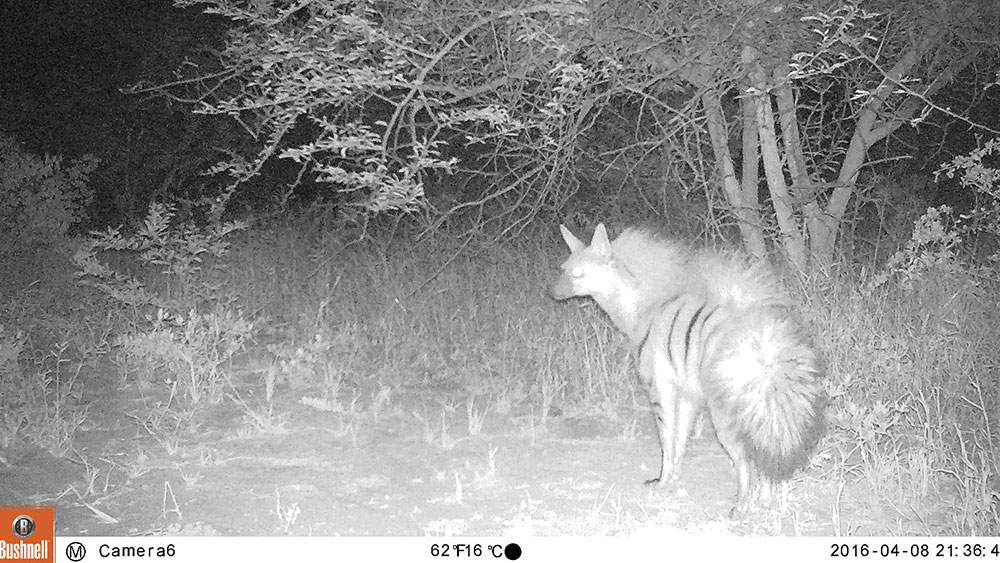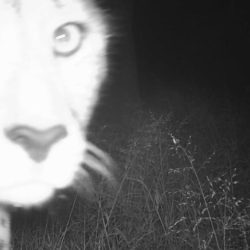Go Green Project Second Anniversary
-

- by November 30, 2017

In the fall of 2015, CCF launched a three-year research project to determine the distribution, density and human-predator conflict areas for cheetah (Acinonyx jubatus), African wild dogs (Lycaon pictus) and other key large carnivores across the Greater Waterberg Landscape (GWL).
This effort was undertaken in response to previous studies that showed that a high level of predator retaliation killing was occurring in this area. As of September 1, CCF completed two years of research, gathering data from across this large rural area that includes CCF lands and is comprised of five conservancies: one commercial (Waterberg), and four communal (Ozonahi, Okamatapati, Otjituuo, African Wild Dog).
Sponsored by Namibia’s Go Green Fund, a program that supports individuals and organizations working towards a more sustainable future and is administered by Nedbank Namibia and the Namibia Nature Foundation (NNF), CCF’s research will enable the targeted deployment of its mitigation tactics. By analyzing data gathered from questionnaires and conflict reports made to the Ministry of Environment and Tourism (MET) and synthesizing that with data from camera traps set at 40 different locations in the GWL, CCF can use its findings to determine where predators are distributed and their relative density. Conflict hot spot areas can then be mapped and resources focused on the problem areas.
In the fall of 2015, CCF launched a three-year research project to determine the distribution, density and human-predator conflict areas for cheetah (Acinonyx jubatus), African wild dogs (Lycaon pictus) and other key large carnivores across the Greater Waterberg Landscape (GWL).
This effort was undertaken in response to previous studies that showed that a high level of predator retaliation killing was occurring in this area. As of September 1, CCF completed two years of research, gathering data from across this large rural area that includes CCF lands and is comprised of five conservancies: one commercial (Waterberg), and four communal (Ozonahi, Okamatapati, Otjituuo, African Wild Dog).
Sponsored by Namibia’s Go Green Fund, a program that supports individuals and organizations working towards a more sustainable future and is administered by Nedbank Namibia and the Namibia Nature Foundation (NNF), CCF’s research will enable the targeted deployment of its mitigation tactics. By analyzing data gathered from questionnaires and conflict reports made to the Ministry of Environment and Tourism (MET) and synthesizing that with data from camera traps set at 40 different locations in the GWL, CCF can use its findings to determine where predators are distributed and their relative density. Conflict hot spot areas can then be mapped and resources focused on the problem areas.
The cataloging system has changed a bit since the footage above was taken in 2016, but the work identifying photos continues. Thanks to this research, CCF is able to prioritize its livestock and wildlife management training workshops in the hot spot areas — where it is needed most — to help reduce conflict and save endangered predator species from needless killing.
Read the Cheetahs, Camera Traps, and Communities blog posts for more on the beginning of this important project.
Contribute to CCF’s science
Become a Citizen Scientist! To help CCF identify the camera trap photos we have gathered so far please visit our Zooniverse page.
Related Reading
-
February 1, 2022
Eyes in the Bush, Brains in the Cloud -
May 29, 2020
Cheetahs and Hyenas on CCF’s Camera Traps -
January 28, 2018
Camera Traps at CCF’s Reserve




